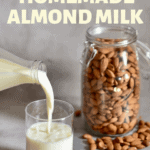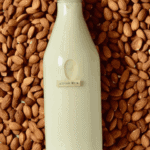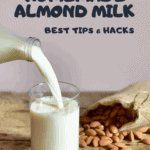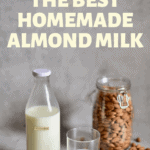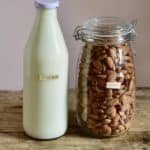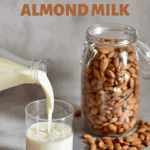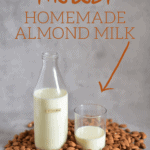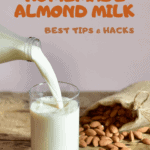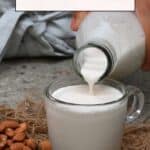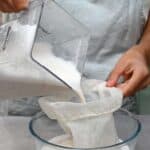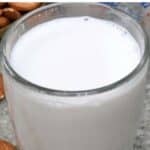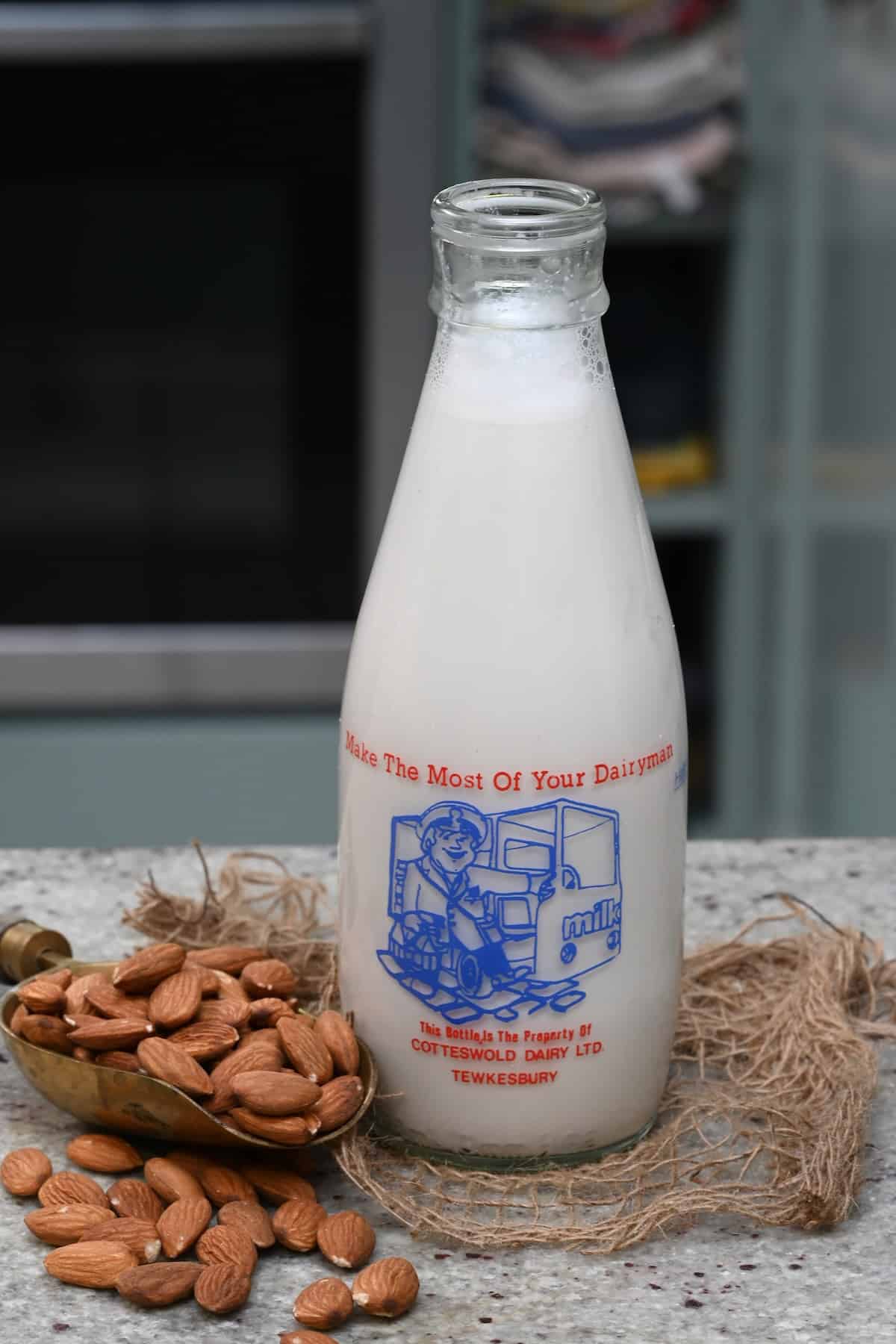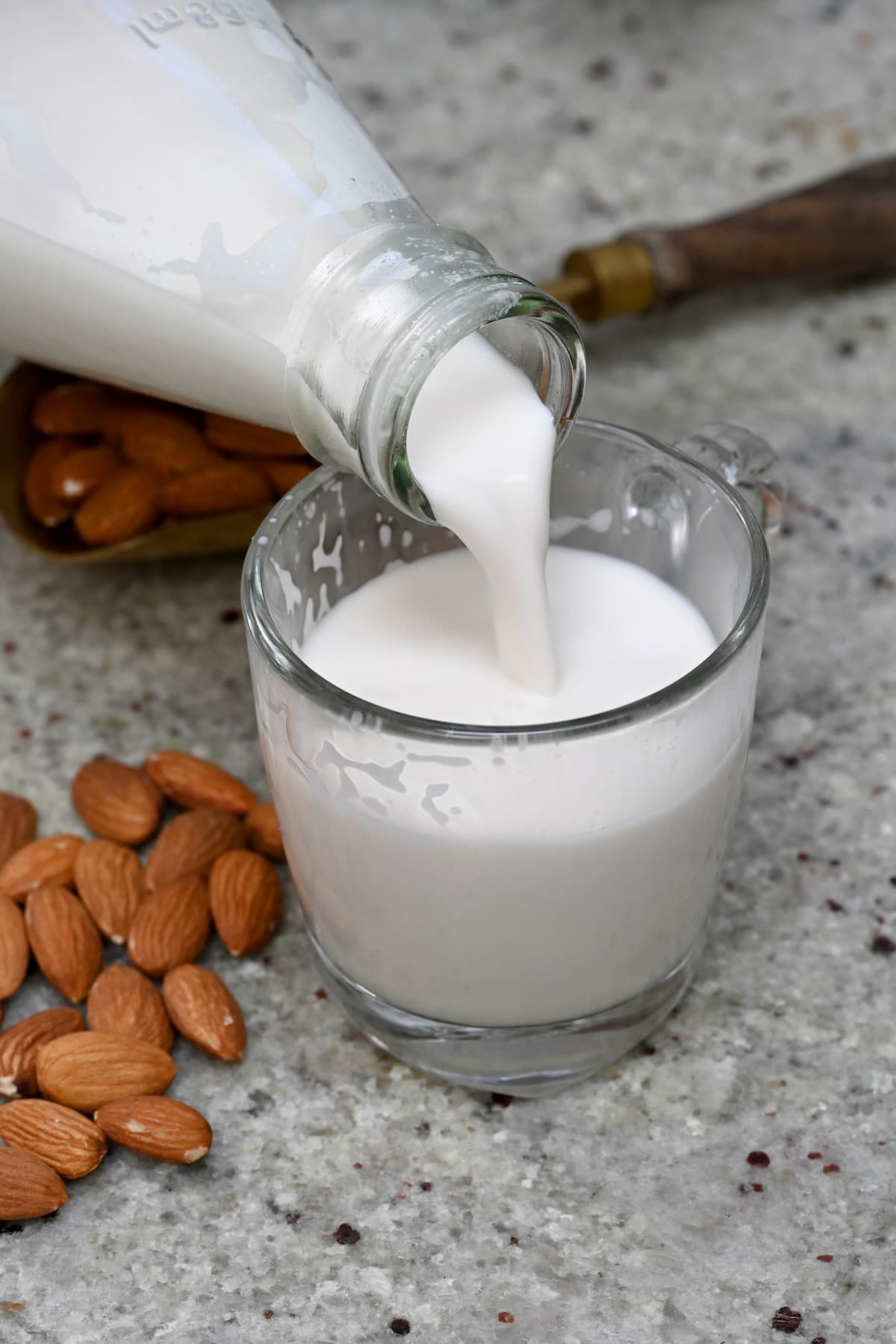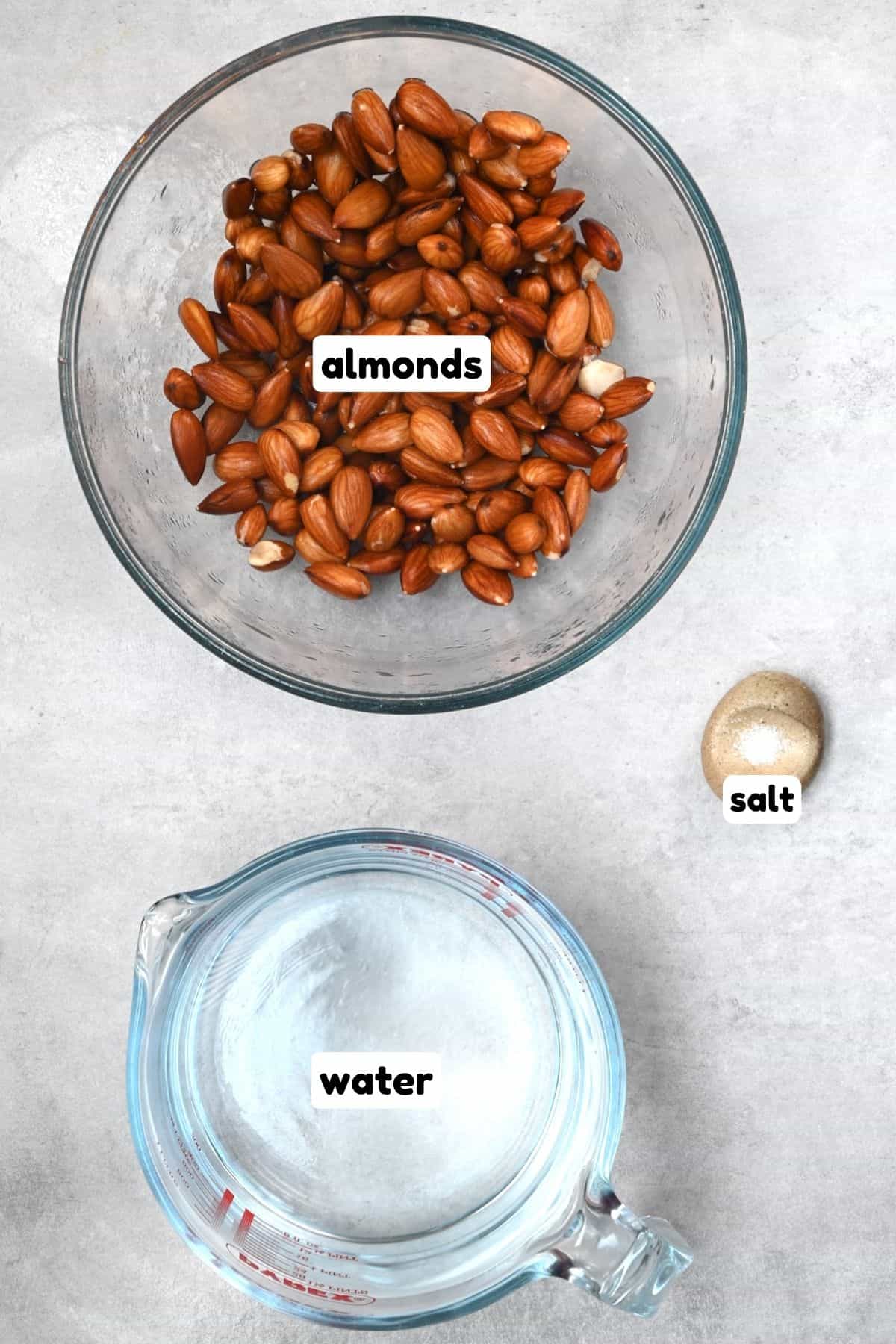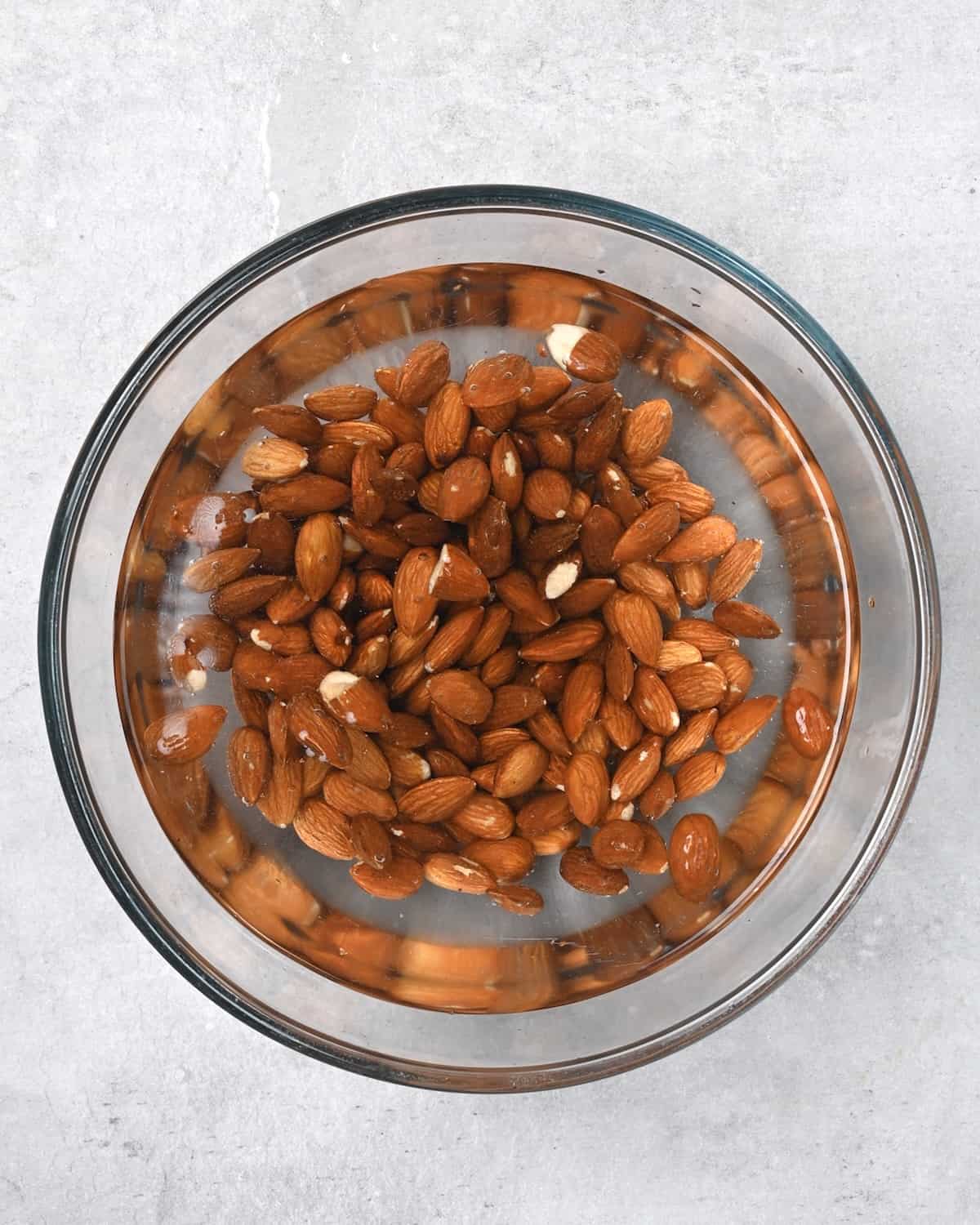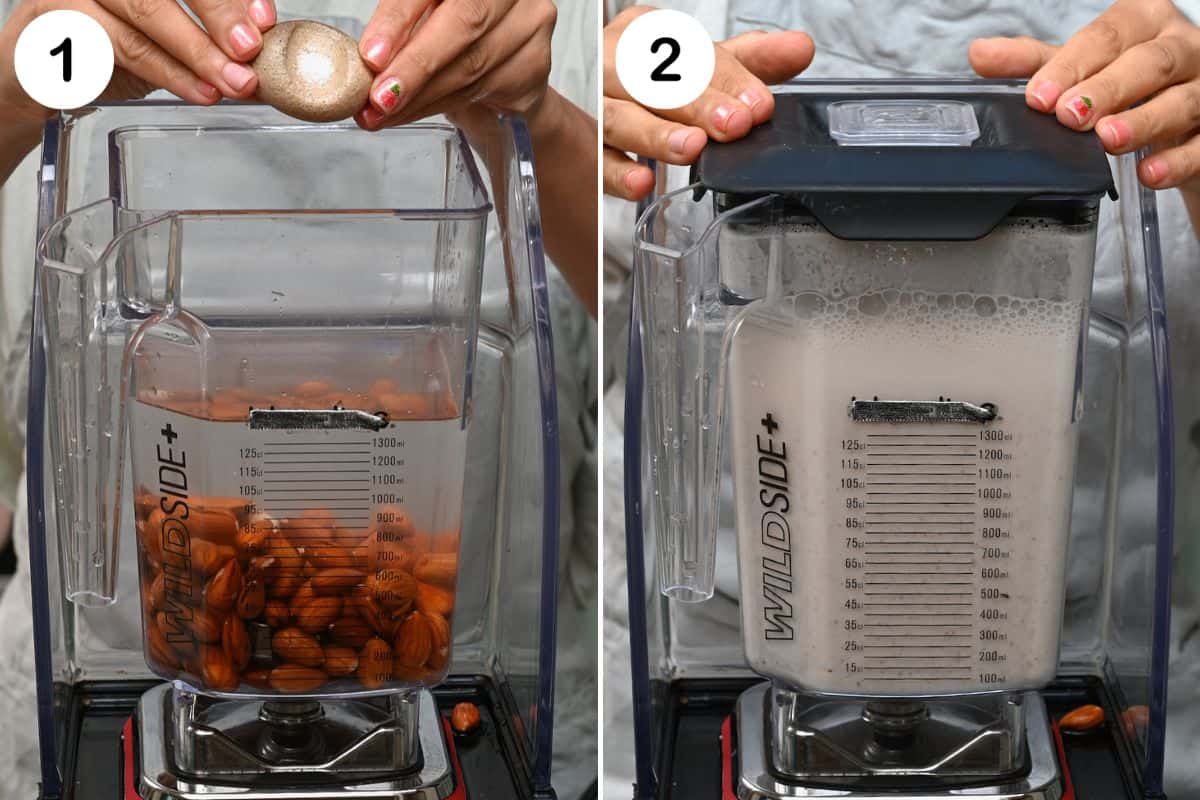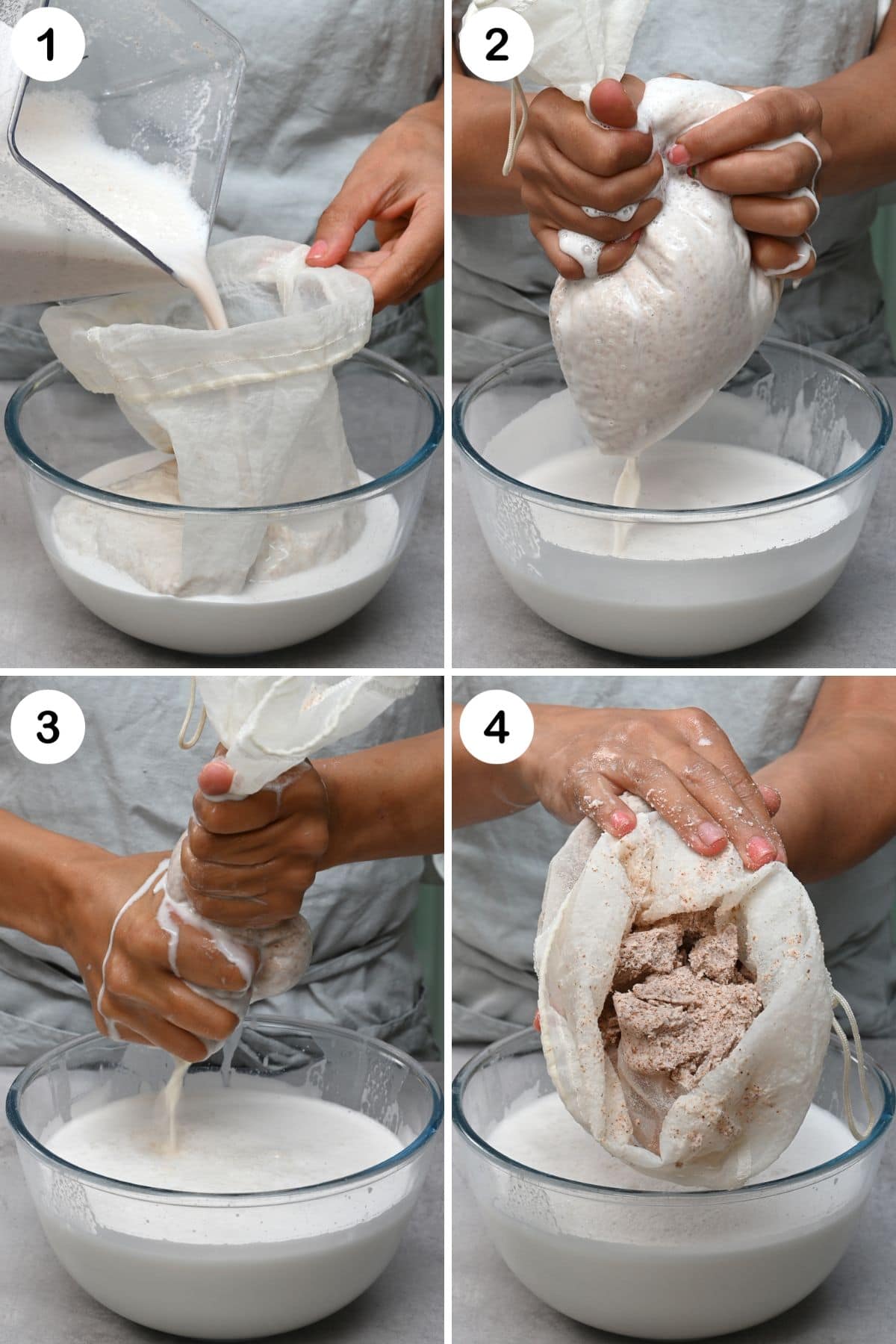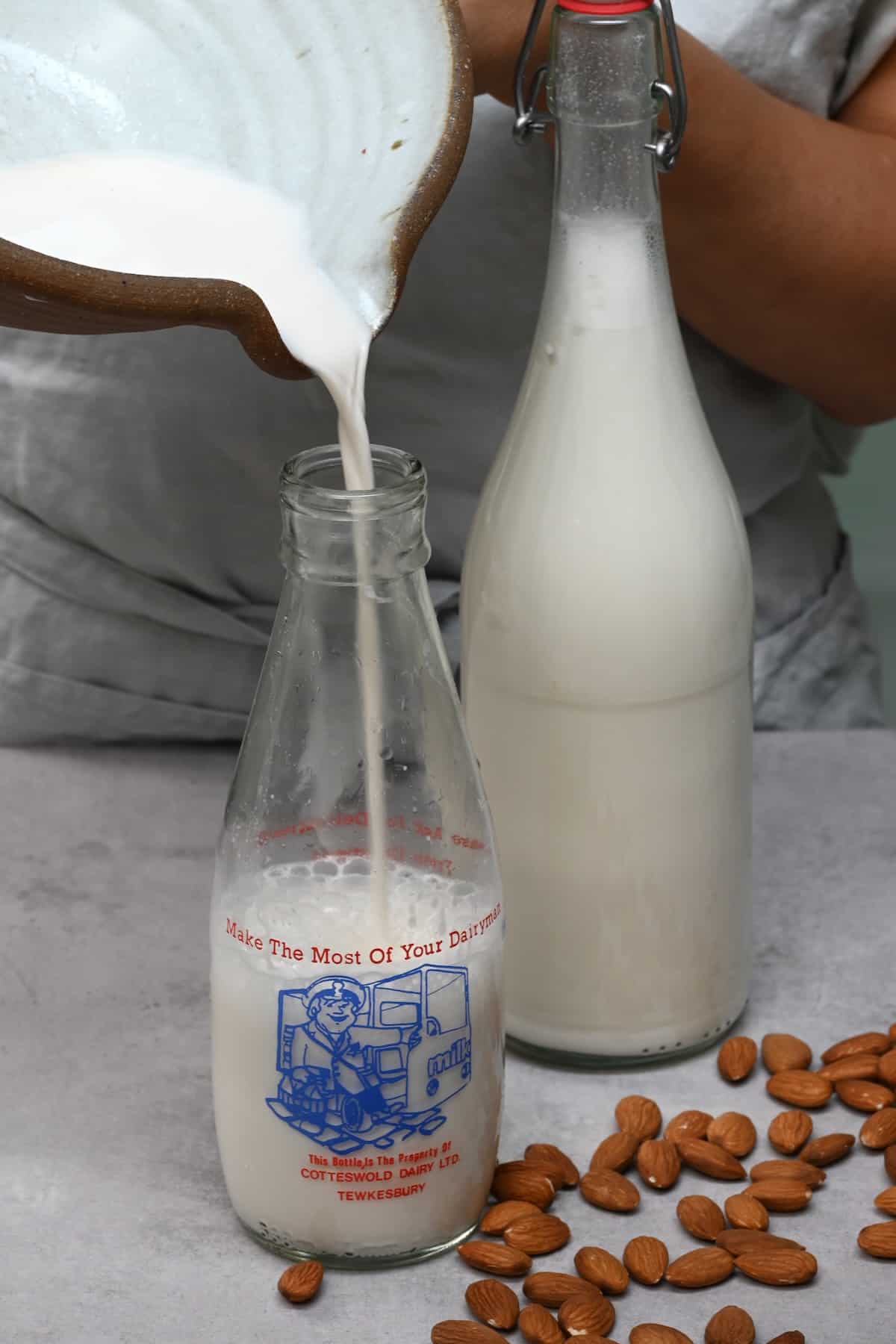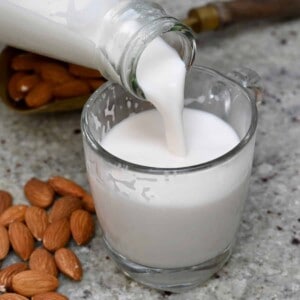Homemade plant-based, dairy-free milk has become a staple in my kitchen for several years. As convenient as it is to buy a carton, the best homemade almond milk is also cost-effective, can easily be naturally flavored, and is really simple to prepare. And you are 100% in control of the ingredients, which means no unwanted additives, thickeners, gums, or stabilizers. Plus homemade tastes so much better than store-bought almond milk! Just blend soaked almonds with water until creamy, and voila – a dairy-free, plant-based milk alternative that is wonderfully creamy and nutty. As an added bonus, almonds are a great source of heart-healthy fats and contain plant-based protein, antioxidants, vitamins, minerals, and more. So let’s dive right into making homemade almond milk!
Almond milk ingredients
There are just three ingredients and one is optional!
Almonds: It’s best to use raw, unsalted almonds. In a pinch, you could use unsalted roasted almonds, though it won’t be as creamy, and you’ll end up with more pulp. Water: I like to use filtered water, but you can use tap water (if safe) too. Sea salt: (Optional) A pinch of sea salt will enhance the flavor.
FUN FACT: If you don’t have raw almonds, you can still make a quick almond milk in 2 minutes: no prepping, no straining, no waste! How? you ask…– All you need is 1 Tbsp of almond butter per 1 cup of water.– Blend both ingredients in a high-speed blender for between 40-60 seconds until creamy and thoroughly incorporated – voila!
How to make almond milk
Soak
First, leave the almonds to soak in a large bowl covered with cold/room-temperature water for 8-12 hours. This step is necessary because soaking the nuts makes them easier to blend and more easily digestible. Plus, the antinutrients within (like phytic acid) are neutralized for higher nutrient absorption. Optionally add a teaspoon of salt (to help “activate” the nuts and further neutralize the enzyme inhibitors). Alternatively, do a “quick soak” by leaving them in hot water for 3-4 hours (no salt needed).
Blend
After soaking, drain and rinse the nuts. Transfer them to a high-speed blender. Add fresh water and blend until it’s creamy and milky (usually a couple of minutes in a high-speed blender).
Strain
Finally, pour the almond milk mixture through a nut milk bag (or layers of cheesecloth within a fine-mesh strainer) to strain any remaining pulp/solids. Squeeze well to extract as much liquid as possible. Enjoy it immediately or funnel it into a glass bottle!
How to flavor
Almond milk has a slightly nutty but mild flavor that pairs well with many ingredients. Add your extras when blending and then strain, as usual.
Sweetened: Add 1 Tbsp maple syrup/agave/honey OR 2 Medjool dates (or date paste). Vanilla almond milk: Sweeten and add around 1 tsp of vanilla extract or powder. Chocolate: Add 2 pitted Medjool dates, 1/2 Tsp vanilla extract & 1 Tbsp cacao/cocoa powder. Strawberry: Add 2 pitted Medjool dates, 1 Tsp vanilla extract & 1 cup fresh strawberries (or other berries). Spiced: combine sweetener with cinnamon, nutmeg, pumpkin spice, etc. – to taste. Almond golden milk: Add golden spice or golden paste.
Ways to use almond milk
You can enjoy this DIY almond milk in many of the same ways as regular dairy milk:
As the liquid base for smoothies and smoothie bowls, In coffee, iced coffee, tea, or hot chocolate, With cereal and granola, Use for oatmeal or overnight oats, To make chia pudding, In baking – to make batter for cakes, pancakes, etc., Add it to sauces and soups, To drink as is – either plain or flavored.
What do you do with almond pulp
There are plenty of ways you can use the leftover almond pulp:
Add to smoothies, Spoon over yogurt bowls/parfaits or oatmeal.
You can also dry it out in the oven at 200ºF/90ºC (usually for between 1 ½-2 hours) and use it as-is or blend it into almond flour/almond meal to:
Add to homemade granola, Use in baking (quick bread, brownies, cookies), Make energy balls or bars, Use in raw tart bases – like this no-bake earl grey blueberry tart.
Storage instructions
Refrigerate: Store it in an airtight, sterilized bottle in the refrigerator for 4-5 days. If it has a sour smell and taste, it’s gone bad. It’s important to shake it each time before using it, as the lack of stabilizers means the drink separates as it sits in the fridge. Freeze: I like to freeze mine in ice-cube trays so it’s “portioned” and I can pop a few cubes out, as needed. Freeze for up to 3 months. Chef’s Tip: If you want to heat almond milk, make sure to do so slowly over low-medium heat. Stir often so it doesn’t come to a boil. This will prevent it from curdling.
Other nut milk recipes
Walnut milk Hazelnut milk Pistachio milk Tiger nut milk (horchata de chufa)
If you try this recipe, let me know how it goes in the comments below. I’d appreciate a recipe card rating and would love to see your recipe recreations – tag me on Instagram @Alphafoodie!
